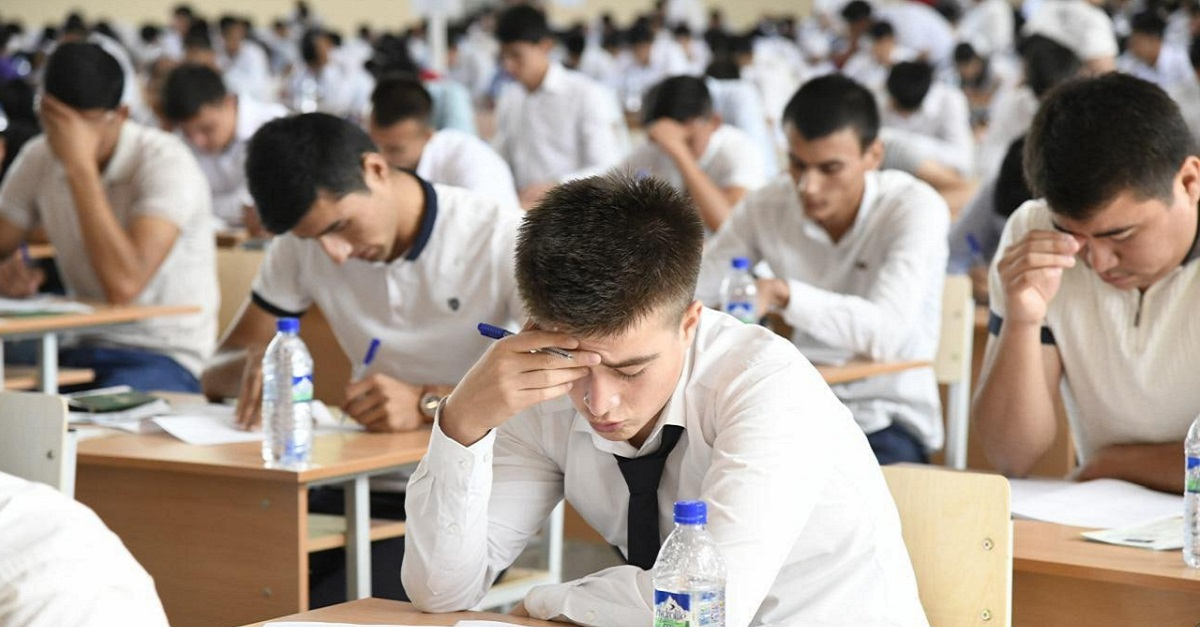The main news and changes for university applicants for this year have been announced…

The DTM Information Service provided information on changes and news in the procedure of taking university entrance tests for applicants in 2022.
1. During last year’s admission, 3.1 points were awarded in 2 subjects in the block of specialties. This year, these two disciplines will be ranked according to their importance. For example, in mathematics, subject 1 is mathematics (3.1 points for each correct answer), and subject 2 is physics (2.1 points for each correct answer).
2. The level of specialization also affects the ability of applicants to choose 5 directions. Now, the difference from the past year is that applicants choose 5 universities not according to 2 subjects of a block of specialties, but according to the first or second specialty subject.
3. In total 30 questions will be given in 3 subjects, 10 per subject - mathematics, native language and history of Uzbekistan, which are mandatory for all test takers and 1.1 points will be awarded for correct answers in these subjects (in 2021, 2.1 points were awarded for correct answers in these subjects in the required block).
The total number of points that can be achieved from the required block is 33 points. A total of 60 questions are to be asked in 2 subjects related to the undergraduate program. The maximum possible score in the first subject is 93 points, while the maximum possible score in the second subject is 63 points.
In total, in academic year 2022-2023, applicants will be given a total of 90 test tasks in 5 subjects. The maximum number of points that can be scored is 189 points.
4. This year applicants will be given 3 hours to complete the tests at entrance exams. Resolution of the Cabinet of Ministers No.261 "On test tasks" provides for one hour for 30 questions. So, 3 hours are given for 90 questions.
5. Starting from this year, the entrance test in 6 universities is changing to creative examination and a foreign language is included in the complex of subjects as the first subject:
Uzbek State University of World Languages;
Samarkand State Institute of Foreign Languages;
Tashkent State University of Oriental Studies.
Also:
Tashkent State Pedagogical University;
Kokand State Pedagogical Institute;
The entrance exams to the undergraduate programs of the Nukus State Pedagogical Institute in teaching a foreign language are to be conducted according to a professional (creative) exam aimed at identifying and assessing the competencies of listening, reading, writing and speaking, instead of regular foreign language exam.
In this case, applicants will have to pass a creative exam in the first subject of a foreign language. The creative English language exam will be conducted on a computer, while the rest of the language will be on paper.
The most difficult and complicated moment for applicants is that they can choose 5 directions only within these 6 universities. The reason is that in other universities, foreign language exams are taken in the form of tests, and the types of questions are different.
6. In addition, the subjects to be studied have changed in some areas. The number of areas of training in state universities is 461, of which 7% have changed the importance of 2 entrance subjects. One taught subject changed its content by 2.8%, and only one core subject changed completely - biomedical engineering.
Jumladan, filologiya va o‘zbek tili va adabiyoti yo‘nalishlarida ham ikkinchi fan – tarix o‘rniga chet tili kiritildi.
In particular, when entering the programs in philology, the Uzbek language and literature, the second entrance test subject, history, was replaced by a test in foreign language.
7. All applicants who graduated from school, college or lyceum a year ago, take entrance exams for a fee. From this year, the categories of applicants who are not to be charged for entrance exams are:
Persons registered in the information system "Unified Register of Social Protection" and their children;
Young people included in the list of “Youth Book”.
Previously, the list of those released included the disabled and children from orphanages, as well as graduates of orphanages.

